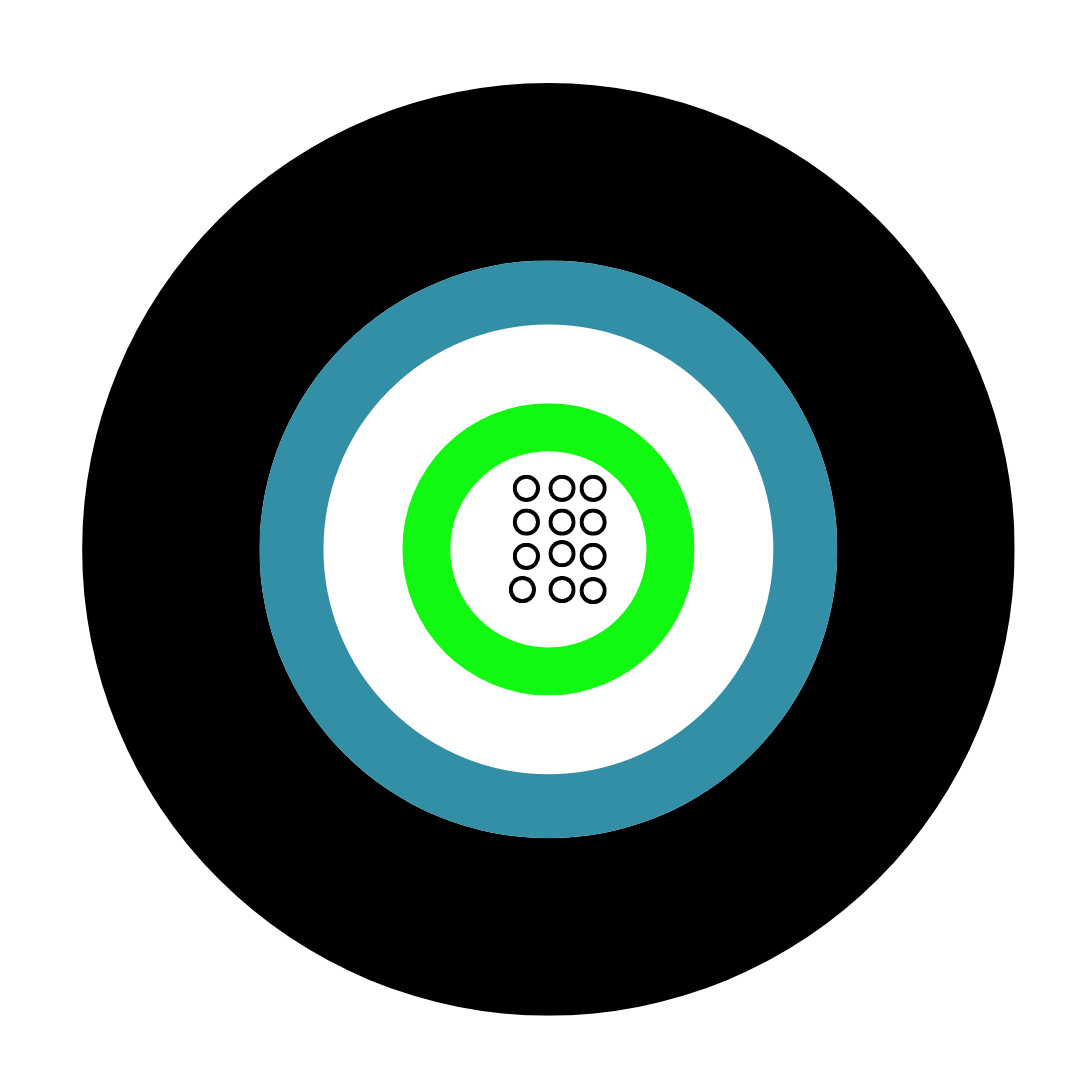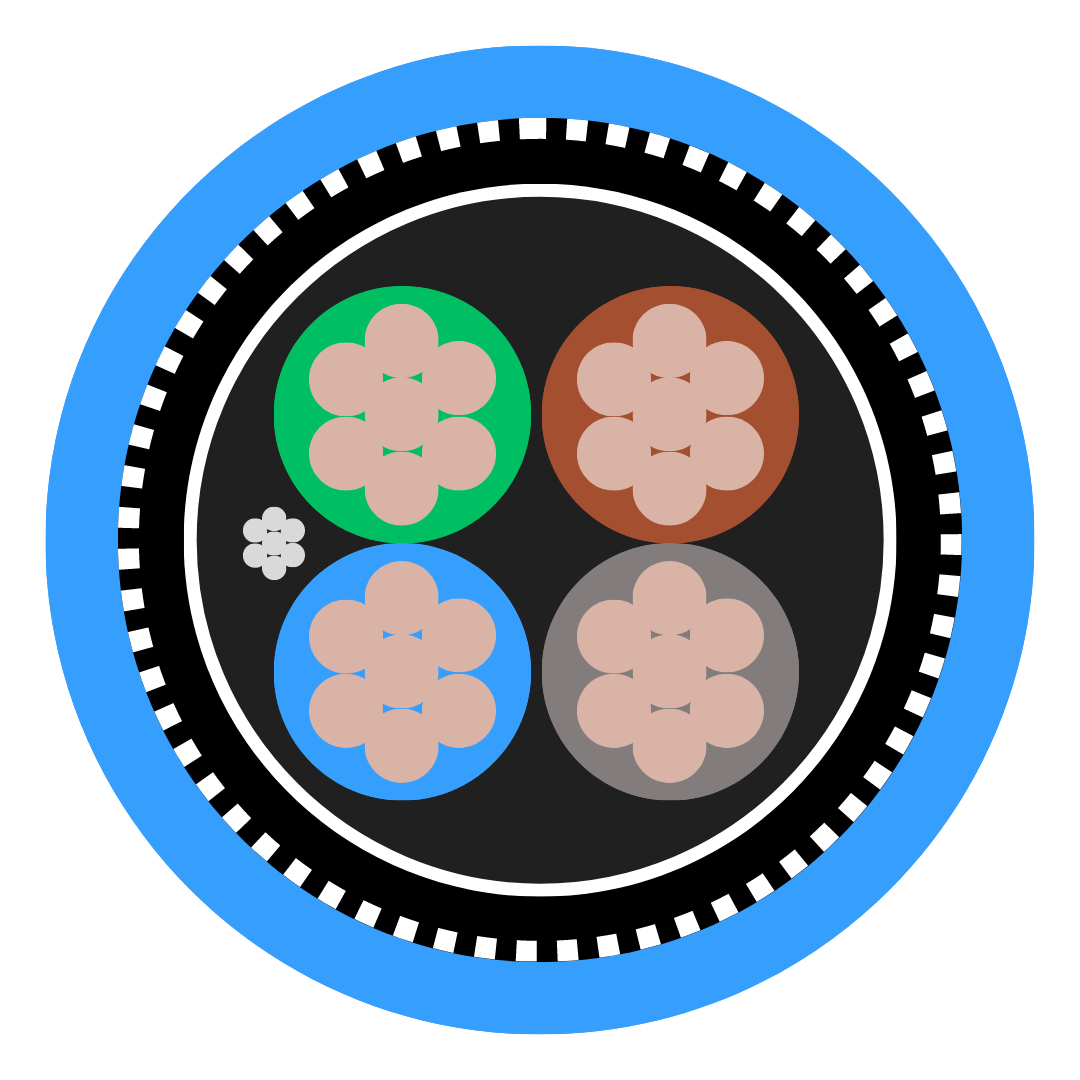Communication wires and cables play a pivotal role in transmitting information through signals. They are indispensable components within wiring systems, facilitating the seamless flow of information between various electrical systems and devices.
Diverse Types of Communication Cables
A variety of communication cables exist, each with its unique set of advantages and disadvantages, catering to different applications. Understanding the intricacies of these cables is essential for optimal performance within various systems.
What Constitutes Communication Cables?
Communication cables function by transmitting information via a current of multiple frequencies. Unlike power cables, which handle high currents and voltages for energy transmission purposes, communication cables operate at lower currents and voltages. They find extensive use in electronic circuits, data transmission, Ethernet connections, and networking.
In essence, communication cables serve as electrical conduits that efficiently relay information signals across different locations, whether proximate or distant. The effectiveness of a communication cable lies in its ability to transmit signals swiftly and reliably over any distance.
Core Components of Communication Cables
At the heart of every communication cable lies its transmission device, which varies depending on the cable type. These transmission mediums may include optical fibres, twisted wire pairs, or coaxial conductors. Encasing this core is a protective mechanical layer, safeguarding the cable against handling and environmental hazards.
Importance of Protective Layers
The protective layers of communication cables ensure the safety of handlers and contribute to the longevity of the cables. It's imperative to select communication wires with appropriate safety ratings, adhering to building wiring regulations and minimising risks such as short circuits and fire hazards. Neglecting these considerations can result in disrupted communication and substantial expenses on repairs.
Explore the Range of Communication Cables
With a myriad of communication cable types tailored to specific purposes and applications, it's crucial to choose the right cable for your needs. Whether it's Ethernet cables or alarm bell cables, Meteor Electrical offers a comprehensive selection to meet diverse requirements. Visit Meteor Electrical today to discover an extensive range of communication cables suited to your needs.
Understanding the Composition of Communication Cables
The makeup of communication wires varies depending on their intended use. Optical communication wires serve diverse purposes, from terrestrial installations to undersea systems, each requiring specific structural considerations.
For above-ground installations, communication cables are configured in various ways, either directly laid underground, housed within protective ducts such as conduits or trunking, or suspended aerially on ceilings and roofs. The design of above-ground cables accounts for factors like strength and weight support over shorter distances.
In contrast, undersea communication cables incorporate a high-strength steel strand to ensure safe installation at ocean depths. The extended length of above-ground cables allows for flexible deployment, whether through ducts or trenches.
Optical fibre communication wires, crucial for transmitting input and output data to computers, also facilitate data exchange between interconnected systems. Commonly referred to as optical data link cables or local-area network cables, these wires enable efficient signal transmission through guided light pulses. Typically, a pair of fibres forms a bidirectional signal channel, with high-quality silica glass minimising signal loss and interference.
Optical communication wires excel in digital applications, where information is encoded into light pulses and converted back into electronic signals through photodetectors and decision circuits. The resultant electric signals drive optical transmitters, converting them back into light pulses for transmission.
By leveraging multiple lengths of communication wires in tandem, these systems efficiently transmit signals across vast distances. Unlike undersea systems, which utilize erbium-doped fibre amplifiers to boost optical signals, earlier coaxial cable systems primarily served analog purposes.
These cables relied on current amplitude to convey signals, with each data signal occupying a distinct section of a broadband signal carried along a shared coaxial conductor.
In transmission terminals, signals undergo combining and separation processes through frequency-division transmitting multiplex equipment, reminiscent of broadcast radio and television communication cables.
This structural complexity underscores the evolution of communication cables and their diverse applications.
Exploring the Common Applications of Communication Cables
Communication cables find extensive use across various applications, each tailored to specific needs and functionalities. Understanding these diverse applications sheds light on the versatility of communication wires and cables:
Computer wiring
Network wiring
Voice transmission in wiring
Ethernet cabling
Industrial wiring
Data transmission in wiring
Fire alarm and suppression system wiring
Theft and burglary alarm wiring
Smoke detectors
Signal monitor systems
Materials Used in Communication Cables
Given the wide array of communication cable types, each is crafted from distinct materials, each serving a crucial role in the cable's performance:
Most communication cable jackets typically utilise grey PVC and black sunlight-resistant polyethylene. These materials play a vital role in safeguarding your wiring against environmental hazards, particularly prolonged exposure to sunlight. UV radiation from sunlight gradually deteriorates the primary insulating layer of communication cables, leading to compromised insulation effectiveness and potential mechanical stress-induced damage.
To mitigate such risks, it's imperative to select communication cables featuring sunlight-resistant materials in their jackets, providing an essential first line of defence against sun exposure.
In terms of conductors, communication cables commonly feature solid, soft, annealed copper conductors, prized for their flexibility and ease of use compared to hard-drawn copper alternatives. Manufacturers employ heat treatment processes to transform hard copper conductors into soft, pliable variants, ensuring optimal conductivity and manoeuvrability during installation.
Furthermore, different types of communication cables come with varying insulations, with semi-rigid PVC and solid polyolefin emerging as common choices. These insulation materials offer flexibility and ease of handling during installation, minimising mechanical strain on the cables while facilitating seamless manoeuvring.
By understanding the materials and design features inherent in communication cables, users can make informed decisions to ensure optimal performance and durability across diverse applications.
Exploring the Variety of Communication Cables
Communication cables come in various types, each tailored to specific functions, offering unique benefits and constraints. Here's an overview of commonly used communication cable types:
Fibre Optic Communication Cables
Fibre optic communication cables comprise a bundle of glass threads and find applications in LAN and WAN setups. Structurally similar to electrical cables, fibre optic cables contain multiple strands within the casing, with each glass thread capable of transmitting information converted into light waves.
The complex design of fibre optic cables includes an outer optical jacket that encapsulates the light within the central optic core. The core, cladding, and casing are three essential components of these cables. The core guides the light signal, while the cladding prevents signal dispersion. The casing protects the cable conductor from external elements.
Fibre optic cables can be configured in two main methods: single-mode and multi-mode. While the difference may seem subtle, it significantly impacts the cable's performance and application. Additionally, plastic fibre optic cables serve shorter communication distances compared to glass fibre counterparts.
Optical fibre cables transmit data at incredibly high speeds, utilising light pulses instead of electrical pulses to mitigate potential hazards. Multi-mode cables feature a larger core diameter, allowing multiple wavelengths of light transmission simultaneously, making them suitable for short-distance communication. Single-mode cables, on the other hand, permit only one type of light transmission at a time, significantly boosting bandwidth and enabling information to travel farther with lower attenuation.
While multi-mode cables offer lower installation costs, they come with higher fibre costs. In contrast, single-mode cables provide enhanced efficiency and lower communication losses, albeit with higher installation expenses. Despite the cost differential, single-mode cables offer superior performance compared to multi-mode counterparts.
Coaxial Communication Cables
Coaxial communication cables feature multiple layers, with a conductor serving as the core to carry radio frequency signals. This core can consist of a single solid conductor or multiple strands of twisted cables. Surrounding the core is a dielectric insulator, separating it from the outer copper braided mesh.
This mesh, sometimes configured as braided or foil, further shields the cable. Coaxial cables are adept at installation near metal objects, minimising power losses common in other transmission lines.
Designed with polyethylene foam insulators, coaxial cables reduce ohmic losses upon contact with the conductor. An outer jacket provides protection against mechanical and environmental damage. With a single solid copper core, coaxial cables boost significantly higher transmission capacity compared to other cables. They're commonly employed in feedlines connecting radio transmitters and receivers, as well as for antennas, computer network signals, and cable television.
Twisted Pair Communication Cables
Twisted pair communication cables serve as a fundamental wiring system linking households and commercial computers to telephone connections. Comprising two insulated wires twisted together in parallel, these cables mitigate electromagnetic induction and crosstalk between wire pairs.
This design optimises the transmission of balanced signals, a technique dating back to the early days of radio and telegraphs. Twisted pair cables come in two common types based on their shielding: shielded twisted pair (STP) and unshielded twisted pair (UTP). STP cables offer higher transmission rates and are suitable for token ring networks, featuring easy installation.
However, they are more expensive and have a larger diameter, making installation challenging in some environments. STP cables find utility in token ring networks and industrial instrumentation applications, particularly in harsh environments. On the other hand, UTP cables are preferred for ethernet cabling systems due to their streamlined design without additional shielding material, offering a cost-effective solution for various communication needs.
Communication Cables at Cableworld
Explore our wide range of communication cables from Cableworld or get in touch with our exports to find out more information about the cables you require for your projects.
Alarm Cable
Arctic Grade Cable
Armoured Cable
Audio & Speaker Cable
Auto Cable
Bare Copper
Belden Equivalent Cable
Co-axial Cable
Data Cable
DC Telecom Cable
Defence Standard Cable
Emergency Lighting & Fire Detection Cable
EV Cable
Festoon
![Loose Tube Fibre Cross Section]()
Fixed Wiring PVC & LSOH Cable
Flatform
Flexible Control Cable
Flexible PVC Cable
Flexible Rubber Cable
General Wiring Cable PVC & LSOH
High Temperature Cable
High Voltage Cable
![5308 p1 t2 cat Cross Section]()
LSOH Flexible Cable
Medium Voltage Cable
NYY & N2XH Cable
Protected Wiring Cable
Silicone Cable
Solar Cable
Split Concentric Cable
Spiral Cable
Temporary Power Cable
Tri-Rated Cable
Welding Cable
Alarm Cable
Arctic Grade Cable
Armoured Cable
Audio & Speaker Cable
Auto Cable
Bare Copper
Belden Equivalent Cable
Co-axial Cable
Data Cable
DC Telecom Cable
Defence Standard Cable
Emergency Lighting & Fire Detection Cable
EV Cable
Festoon
![Loose Tube Fibre Cross Section]()
Fixed Wiring PVC & LSOH Cable
Flatform
Flexible Control Cable
Flexible PVC Cable
Flexible Rubber Cable
General Wiring Cable PVC & LSOH
High Temperature Cable
High Voltage Cable
![5308 p1 t2 cat Cross Section]()
LSOH Flexible Cable
Medium Voltage Cable
NYY & N2XH Cable
PAS - BS5308 Instrumentation Cable
Protected Wiring Cable
RS-232 Cable
RS-485 Cable
Silicone Cable
Solar Cable
Split Concentric Cable
Spiral Cable
Telephone Cable
Temporary Power Cable
Traffic Signal Cables
Tri-Rated Cable
Welding Cable










































